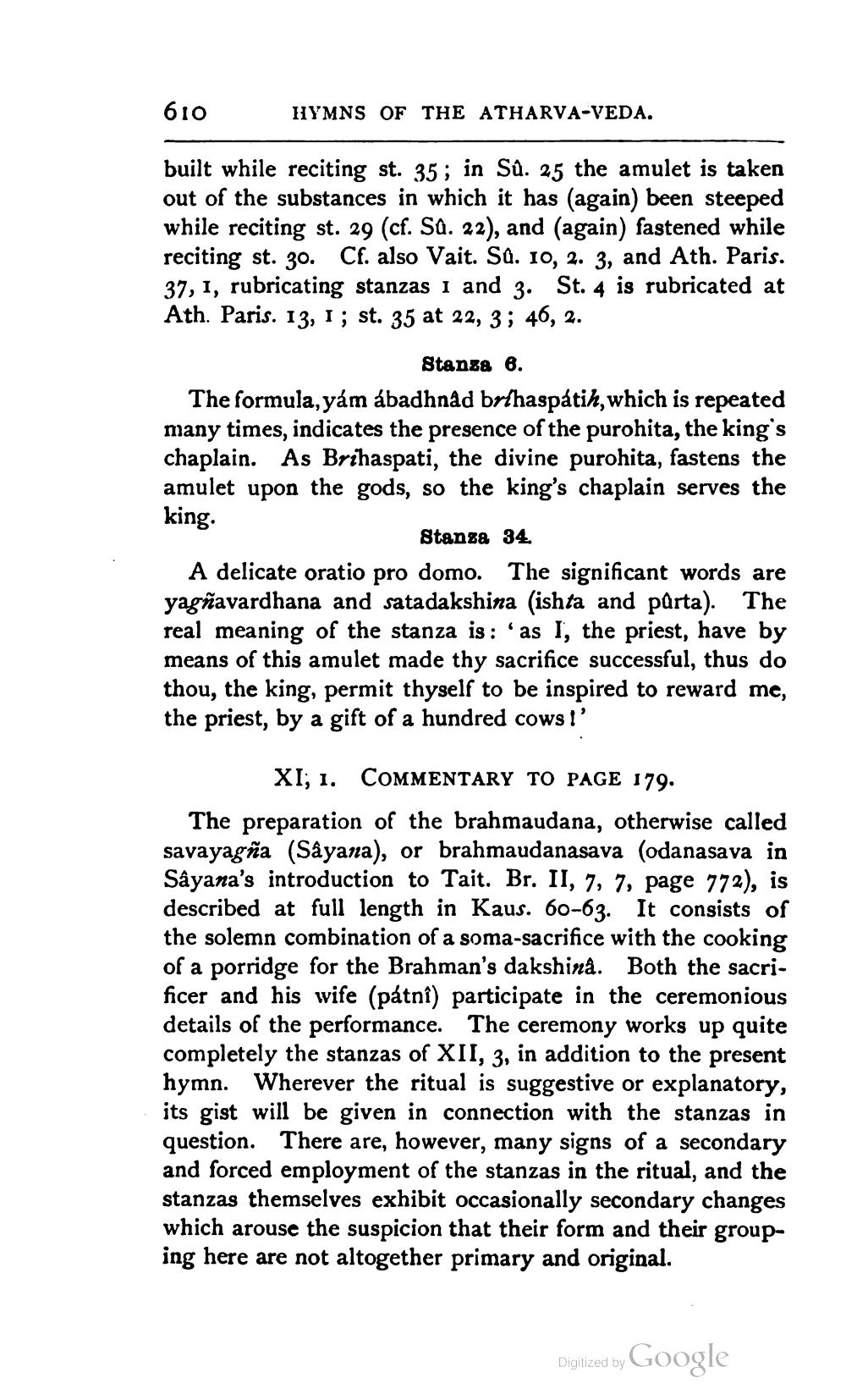________________
610
HYMNS OF THE ATHARVA-VEDA.
built while reciting st. 35; in Sû. 25 the amulet is taken out of the substances in which it has (again) been steeped while reciting st. 29 (cf. Sa. 22), and (again) fastened while reciting st. 30. Cf. also Vait. SQ. 10, 2. 3, and Ath. Paris. 37, 1, rubricating stanzas i and 3. St. 4 is rubricated at Ath. Paris. 13, 1 ; st. 35 at 22, 3 ; 46, 2.
Stanza 6. The formula, yám ábadhnad brlhaspatih, which is repeated many times, indicates the presence of the purohita, the king's chaplain. As Brihaspati, the divine purohita, fastens the amulet upon the gods, so the king's chaplain serves the king.
Stansa 34 A delicate oratio pro domo. The significant words are yagñavardhana and sata dakshina (ishta and porta). The real meaning of the stanza is : 'as I, the priest, have by means of this amulet made thy sacrifice successful, thus do thou, the king, permit thyself to be inspired to reward me, the priest, by a gift of a hundred cows!'
XI, 1. COMMENTARY TO PAGE 179. The preparation of the brahmaudana, otherwise called savayagña (Sayana), or brahmaudanasava (odanasava in Sâyana's introduction to Tait. Br. II, 7, 7, page 772), is described at full length in Kaus. 60-63. It consists of the solemn combination of a soma-sacrifice with the cooking of a porridge for the Brahman's dakshina. Both the sacrificer and his wife (pátní) participate in the ceremonious details of the performance. The ceremony works up quite completely the stanzas of XII, 3, in addition to the present hymn. Wherever the ritual is suggestive or explanatory, its gist will be given in connection with the stanzas in question. There are, however, many signs of a secondary and forced employment of the stanzas in the ritual, and the stanzas themselves exhibit occasionally secondary changes which arouse the suspicion that their form and their grouping here are not altogether primary and original.
Digized by Google




